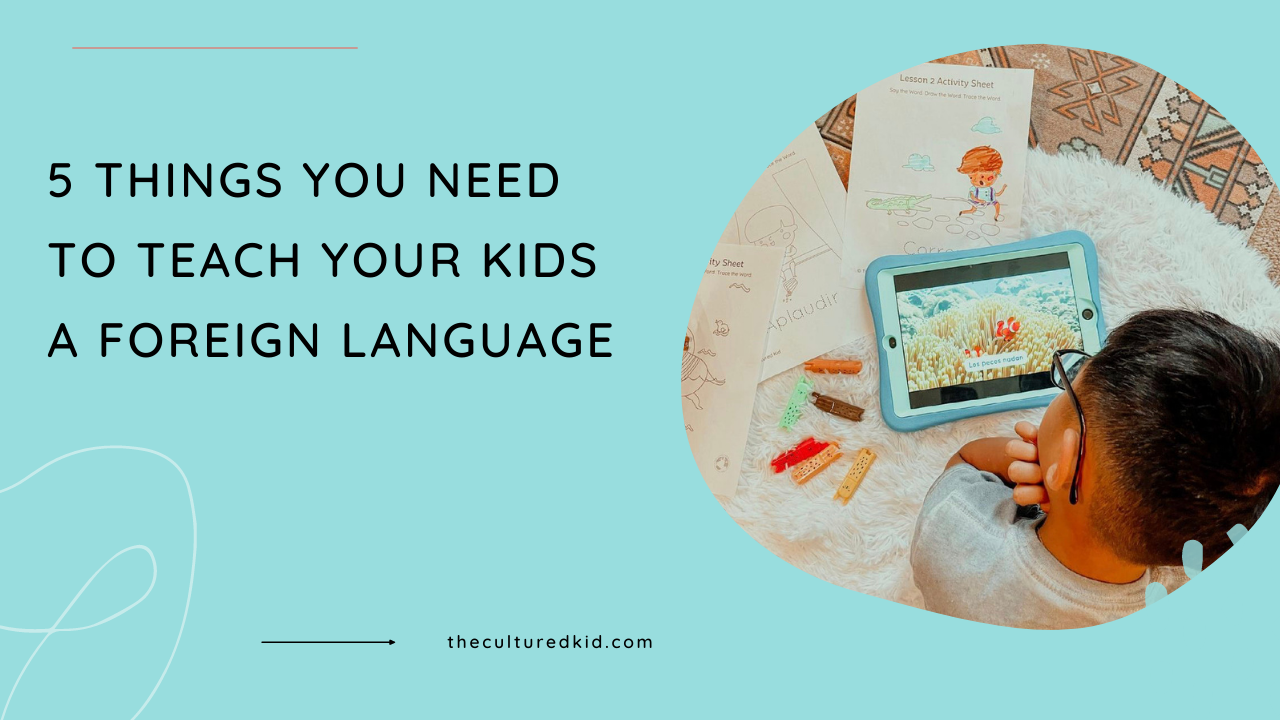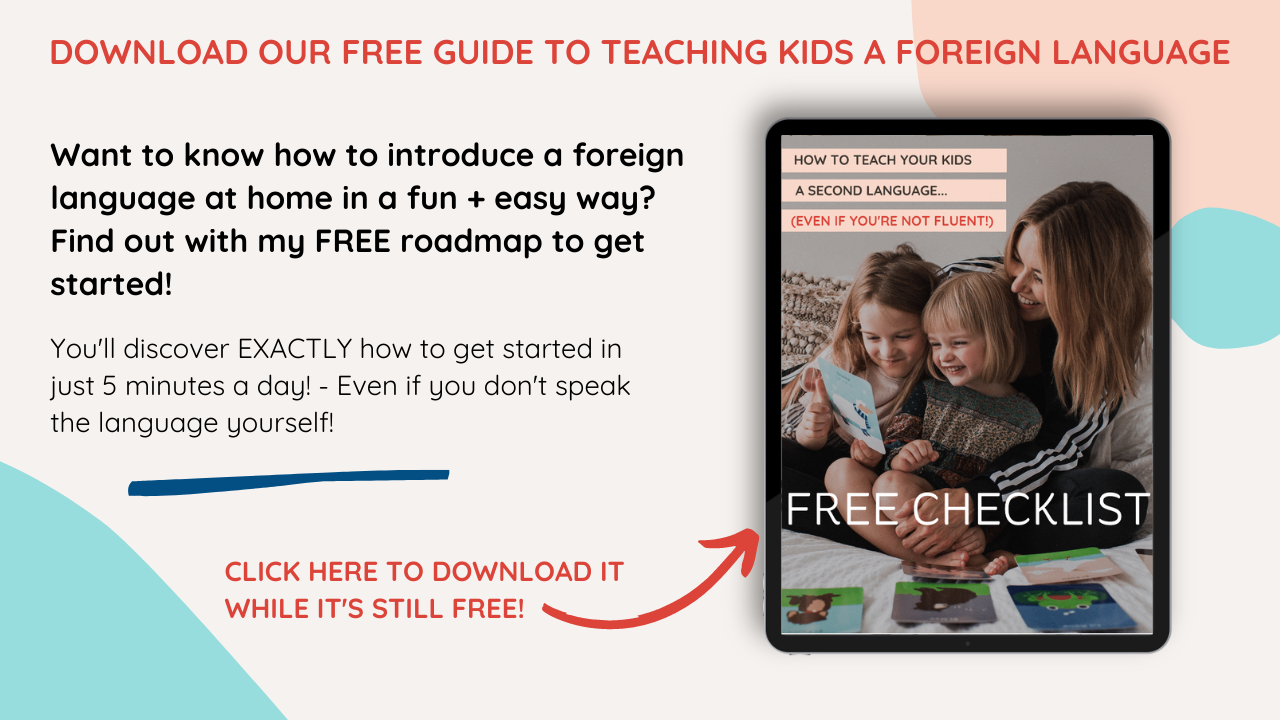5 Things You Need to Teach Your Kids a Foreign Language

5 Things You Need to Teach Your Kids a Foreign Language
After speaking to many parents and also thinking back to my own experiences, the easiest part of this journey was making the decision to teach my kids a foreign language at home. Then came the hard part…where to start? What do I need? And oddly enough, the answers were not as straight forward as you might think. So after a few years of teaching my kids at home and one “World’s best teacher” coffee mug later, these are the 5 things that I would say is definitely needed to successfully teach your kids a foreign language at home.
- Choose the right language for your kids
As simple as this step may seem, it is actually very important, as there is such a thing as “the right language” for your kids. There is no need to rush through this process so take some time to talk to your kids about what ideas they have for their futures. Does your daughter want to travel the world? Then perhaps you should have a look at which languages are most spoken across the world.
Does your son sometimes have difficulty learning or retaining new information? Then have a look at the languages that are the easiest to learn. It can also happen that your kids heard a new language in a cartoon or movie and simply fell in love with it and now they want to learn it.
The point is, it is important to help your kids choose the language that will be best for them and the reason why they want to learn it, whatever that reason may be. If you need some help in this department, have a look at one of our previous blogs The most important language to teach your child.
- Build a solid foundation
Once you have chosen the perfect language to begin with as a family, the next thing you will need is to build a solid foundation, which means to start with the basics. When you were holding your adorable little kids and wanted to teach them how to walk, you didn’t simply chuck them down the hall and hope the momentum would teach them how to do it quicker.
Of course not! The same goes for teaching your kids a foreign language. There is no point in throwing grammar rules and complex sentence structures their way, start at the very beginning with simple things which will mostly be greetings, introducing themselves and objects that are used most in their day to day activities. I remember in the earlier years of starting to teach my kids a new language, I got a bit ambitious, because they were making such good progress.
I thought it would speed up the process even more if I started with some grammar rules. Needless to say, 3 hours of explaining and 2 very blank looking expressions on my daughters’ faces later told me that was not the way to go. So we put the grammar aside and continued to build our foundation first until we got to the point where they were advanced enough to start working on the more difficult parts like grammar.
- Engaging environment and resources
When it comes to teaching anything at home, especially a foreign language, some of the most important things you will need is an engaging environment and engaging resources. While your kids are learning a new language, their focus will either be on where they are while learning or on what they are learning with.
This doesn’t mean that you should go out and buy a bunch of expensive equipment, decorations or toys; it simply means that you have the opportunity to help your kids make great progress by enhancing their learning experience by using these tools. I saw some of the best progress in my kids’ French studies after I made some changes to our learning environment in the house and the kind of resources I used to teach them. I found very creative and entertaining worksheets (that were free online) that got them so excited, they didn’t want to stop and ended up taking them to bed some nights.
But it’s not just about what you put into that hour or two of designated teaching time, it also matters what environment they are in for the rest of the day. We redecorated my study and turned it into a learning room for my kids, filled with handmade pictures, an Eiffel Tower made of matches and my computer always open on Spotify with their favorite French songs. Immersing them in the language and culture will make all the difference in the world.
- Consistency
I have said it before and I will say it again; consistency is key! We as parents have to keep in mind that our kids depend on us to teach them this language and progress will be slow, if not at a complete standstill if we don’t make the time to teach them consistently.
When kids are young, under the age of 8, their brains are highly absorbent and are able to pick up and retain new information very well, but how will this benefit them if we don’t give them the information to pick up? That is why I like to remind our parents, just like I had to remind myself sometimes, you are not just teaching your kids, you are learning with them.
- Patience
I feel like this is something that every parent truly NEEDS, not just for everyday parenting, but especially when you are teaching your kids a new language. Sometimes we as grownups forget what it was like to be a kid and how hard certain tasks seemed to us that we now can perform on autopilot while multitasking. We as adults have the tendency to get impatient when our kids don’t understand something that we deem to be simple, just because we do understand it and therefore assume that they should also be able to do so.
This takes me back to my high school years, math class to be precise, where I had a highly intelligent teacher capable of writing down two math problems simultaneously using both hands. I on the other hand was incapable of understanding either one of those math problems, even when applying all my focus on it. He would get furious at several of us in the class that didn’t understand these simple math problems as he put it, simply because it was so easy to him.
As you might guess there was lots of frustration and little progress, until a friend of mine that had an affinity for mathematics, took the time to explain it to me in a different and simpler way. Her patience and guidance helped me double my marks that year. It might not seem like the most important thing that you will need to teach your kids a foreign language, but I can promise you it is essential.
I’m sure some of these things may have come as a surprise to you, but each one is just as important as the next if you want to go on this exciting adventure as a family and start teaching your kids a brand new language at home.
So have you chosen a language yet? Do you need some help getting started?
Check out our previous blog 10 Things I wish I knew before introducing a new language at home and let the adventure begin!

✨ Psst... When you're ready, here are a few ways I can help you get started with teaching your kids a foreign language at home...
1. Download my free 10 Page Guide for Parents to help you see how easy introducing a foreign language at home can be - especially if you don't speak the language at all.
2. Want a plan to run consistent language lessons that are fun and easy?
Access your first week of play based foreign language lessons for FREE here, all that's left is to select your language + start today!
3. Looking for a 12 month, step-by-step plan and play based resources to help you introduce a language to your little ones with EASE? Quit scrolling on Pinterest and Join our 12 Month Annual Lesson Bundles to get everything you need to started and KEEP GOING!
GRAB OUR FREE 'KIDS LANGUAGES MADE EASY' GUIDE
FOR NON-NATIVE PARENTS!
Discover how you can run consistent language lessons, that are fun and engaging and help your kids make the progress they deserve!
Even if you're not fluent!
We hate SPAM. We will never sell your information, for any reason.









